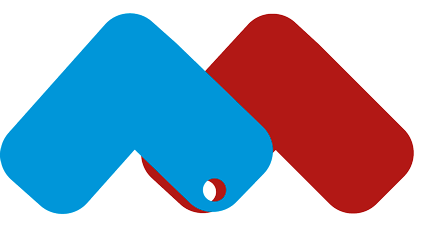We are delighted to introduce to you a video series by David Day, University of Western Australia and Lisa Dragoni, Wake Forest University, North Carolina, about leader development.
Day and Dragoni have researched the theme of leader development and made four short videos (about 3-4 minutes each) to enlighten us about their studies, which are published in the Annual Review of Organizational Psychology and Organizational Behavior.
The videos will play one after the other. In this article, we will focus on the first three. Watch the last video if you are interested in learning more about future research and research methods of leader development.
Developing Your Leaders: Linking Short-Term Change to Long-Term Success (Video I)
In this first video, David Day introduces the outcome-oriented approach to understanding how time and levels of analysis influence leadership development. David distinguishes between leader development and leadership development, explaining how these things happen at different levels and involve different outcomes.
A concise definition of Leader Development is the following according to Day:
Leader development is the expansion of individual capacity to be effective in leadership roles and process.
The focus of the definition is on expanding capacity – not necessarily effectiveness, David Day says – that’s how the capacity is applied.
David goes on to explain another organizing principle in the article, which is that of time as things happen at different speeds.
Usually, we focus on skills and competencies as related to leader development.
However, David Day emphasizes the importance of talking about leaders’ self-views and makes it clear that we are then talking about mainly three different things:
- Leader self-awareness
- Leader self-efficacy
- Leader identity
These are important processes that support the development of skills and competencies, Day explains.
He goes on to explain that what shapes competencies and self-views are the individual capabilities someone brings into a context – which in turn are shaped by experiences and intervention.
He also touches on more long-term holistic outcomes in terms of available theories such as dynamic skills theory, sophisticated sense-making, etc. These are developmental psychological approaches that are much more long-term to bring about, yet important to match the complexity of the leaders with the complexities of their environments, he explains.
The proximal outcomes of self-views, skills, and competencies lead to these long-term outcomes as they are matched to the practice and support that leaders have across time.
On the research and practical implications of the framework, David Day says the following:
One of the most important implications for the leader development aspect of our framework is that effectiveness is not the ultimate outcome.
Effectiveness is not the ultimate outcome
The definition that we use for leader development is the expansion of individual capacity to be effective in leadership roles and process, says Day.
Leading Leadership Research: A Framework for Research and Practice (Video II)
So the focus should be on enhancing, expanding or developing the capacity of individuals, says David Day in the second video.
The other aspect of the framework that I talked about, says Day, is the notion of time and that there are different outcomes at different time specifications. Things happen more quickly or more proximally, or things happen more slowly.
We think that these can be helpful in that by focusing on some of the proximal indicators of development, such as self-views about what people have around their self-concept including self-awareness, self-efficacy, and self-identity. In addition to skills and competencies, focusing on these things can be indicator s of more long-term development in terms of hierarchical complexity and other more distal outcomes that are happening.
Implications for Research and Practice
Research implications include focussing on longitudinal research to study leader development. If we are going to study leader development and development of processes, we really need to be studying these over time
In terms of practical implications, one the things that are implied in our framework is the notion of further tailoring development to match the individual capabilities that people bring into a developmental opportunity and also providing the appropriate levels of practice and support that’s needed, depending on their self-views and their levels of skills and competencies.
One final thought, leadership development is a journey and it can traverse potentially the entire lifespan, which makes it difficult to study. We hope our framework helps provide researchers and practitioners with some ways of thinking about what happens and when, how to design their research and how to design interventions to best take advantage of those outcome indicators.
What can Leadership Development Do for Your Organization (Video III)
Leadership development is a priority and on the minds of many human resource professionals, says Lisa Dragoni in this third video. It is a priority for trying to figure out the type of leadership talent they need to move their organizations into the future.
Dragoni turns to talk about leadership development as opposed to leader development. Leadership development is more focused on the collectives in organizations with regard to teams and units and how they can create clarity of direction, alignment of mindset and effort, and higher levels of commitment and motivation towards those directions.
Team Level
But how do teams generate direction and commitment? And how do teams develop a notion of shared leadership?
We know that with leadership, we need followership. The extent to which the leadership function is shared within the team, that is what this research is about, says Dragoni.
Basically, there are three conditions that help the development of this type of shared leadership, Dragoni explains:
First, this condition concerns an interpersonal comfort that develops among the members. They trust one another, they are viewed as warm and caring individuals, and this allows them for sharing of influence and expertise.
Second, knowledge about what do people in the team know – what is their expertise.
Third and last, the notion of a shared mindset, both in terms of our goals and our purposes, but also in terms of the extent to which we value sharing influence and leadership.
So when those three conditions are present, this work is showing that leadership development within teams tends to be present and growing.
Organizational Level
The second area of research is at the organizational level. Here researchers are trying to understand, how do organizations develop leadership – leadership is more seen as a process by which organizations can manage the environmental uncertainty that might be present, Dragoni points out.
She moves on to talk about two different research institutions doing leadership development research, which have come to similar results, independently of each other.
They find, says Dragoni, that leadership is growing in these organizations that have greater clarity of direction, effort, and motivation when there are pockets in the organization in which there are informal leaders, and there is a negotiation process that that then occurs with those who are occupying formal leadership positions. and their work is then about the process by which there is this negotiation and how does clarity of direction, alignment, and commitment get fostered as a result.
The work I’m sharing here, Dragoni says, is really in its infancy, some of it is still in press and there’s a lot of work to be done in this area. This will give you an idea of the beginning stages of what we see in the area of leadership development.
***
If you are interested in more knowledge about the research approach to leader development, proceed to watch the last video (IIII) about leader development with the title: Lessons for Leadership Scholars: Where You Can Take Your Research
References
Day, David V. and LIsa Dragoni (2015): Leadership Development: An Outcome-Oriented Review Based on Time and Levels of Analysis. Annual Review of Organizational Psychology and Organizational Behavior. Vol. 2: 133-156.








David Day and Lisa Dragoni’s excellent research touches on the crucial task of organizations in developing leaders. The capacity of an incoming leader at an early stage of the career path is like that of the talent of an aspiring olympic athlete, it doesn’t go unnoticed, yet it can only be developed in the leadership framework of organizational development. To become an aspiring leader, the journey is guided by the effectiveness of the organization’s clarity of direction, its leadership program, its team dynamics, and its willingness to push capacity development to the benefit of the leader and that of itself. Depending on the speed and applications of that capacity, the leader develops skills to reach an inspirational level which becomes, in turn, responsible for developing more leaders. Exposure to and entrenchment in multi-gender, multicultural, and multi discipline teams earlier on, serves to build a well rounded leader who is forward thinking and self-advancing.
Great post, thank you.
Thank you, Amr Ismail, for your thoughtful and interesting comment. We agree in every way. You touch on many crucial elements of what makes a ‘well-rounded leader. Compassion is another concept that is much discussed these days, in terms of qualities great leaders possess. What are your thoughts on this? Thank you again, we really appreciate your thoughts. Happy new year